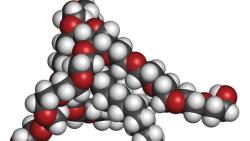
OR WAIT null SECS
- About Us
- Advertise
- Editorial Information
- Contact Us
- Do Not Sell My Personal Information
- Privacy Policy
- Terms and Conditions
© 2024 MJH Life Sciences™ and BioPharm International. All rights reserved.
Advancing QbD in the EU
EU authorities are stepping up their efforts to incorporate QbD principles.
The European Commission (EC) and the European Medicines Agency (EMA), have been supporting quality-by-design (QbD) concepts over the past 10 years. In 2003, EMA set up a team to back activities in process analytical technology (PAT) in the EU. The agency has seen its PAT team as a key element in the implementation of QbD by encouraging process understanding. This knowledge becomes a basis for achieving quality by ensuring pre-defined quality criteria are met through design rather than ad-hoc testing. However, EMA has not been a strong driving force behind the adoption of QbD in the EU compared with FDA in the United States.
Sean Milmo
Recently, both EMA and the EC have experienced pressure from the pharmaceutical industry, particularly in the biopharmaceutical sector, to do more to encourage QbD. In addition, EU authorities are becoming more concerned about the increasing number of quality defects in pharmaceutical manufacturing that have been causing a rise in drug scarcities.
ICH GUIDELINES
The industry has been wanting to see greater use of the Q8, Q9, and Q10 guidelines of the International Conference on Harmonization (ICH), which contain most of the basic QbD principles. These guidelines cover pharmaceutical development concepts in Q8, quality risk management (QRM) in Q9, and a pharmaceutical quality system to be implemented in the different stages of a product lifecycle in Q10. The ICH guidelines offer pharmaceutical manufacturers the option of taking the "minimal" or traditional approach to quality assurance or an "enhanced" structured approach, which involves concepts like critical quality attributes (CQA), design space, and control strategies.
The industry has been urging EU authorities to put more emphasis in regulations and guidelines on the enhanced attitude to quality, particularly because QbD is seen as a means for easing the regulatory burden with less need for inspections and post-approval submissions. EMA has, however, stressed that the adoption of an enhanced QbD approach by drug producers is optional rather than a requirement.
In comments published last year on proposed changes yet to be finalized to EU regulations on approval of manufacturing variations after marketing authorization, pharmaceutical trade associations called for more accommodation of elements of the ICH guidelines in the legislation. EuropaBio, which represents both biotechnology companies and national associations in Europe, said in its comments, published in July 2012 on a proposed revised guideline on variations, that greater recognition should be given to an enhanced QbD approach. This approach would provide opportunities for "a more science- and risk-based approach" in assessing manufacturing changes.
In a joint comment, the European Federation of Pharmaceutical Industries and Associations (EFPIA), representing original drug producers, European Biopharmaceutical Enterprises (EBE), and European Vaccine Manufacturers (EVM), urged the EC to make clear in legal text that changes within a design space did not constitute variations that need to be approved. Design space is defined as a QbD component that sets the combination of variables and process parameters providing assurance of quality.
The pharmaceutical industry in Europe sees QbD concepts as reflecting existing practices in the sector. Introducing them in regulations and guidelines gives more emphasis to the important elements in quality assurance.
"The adoption of ICH Q8–10 is not introducing new requirements or expectations," says Julie Marechal-Jamil, senior manager of quality and regulatory affairs at the European Generic Medicines Association (EGA), Brussels. "But the regulatory adoption of the guidelines is clarifying what elements are considered essential to support the pharmaceutical development section of a marketing authorization application dossier." Nonetheless, she claimed that "many practical questions regarding implementation of QbD remain open—even for medicines originators."
The European Commission's latest revision of its GMP guide, effective from Jan. 31, 2012, shows the degree to which it is responding to calls for ICH guidelines to be given greater prominence in EU rules on quality in pharmaceuticals. Chapter 1 of the guide has been changed to align it with the concepts and terminology of the ICH Q10 guideline on pharmaceutical quality systems. It makes clear that this new chapter will also apply to two existing pieces of EU legislation on the principles and guidelines of GMP—one, for medicines for human use, and other, for veterinary applications. References in the legislation to "an effective quality-assurance system" that manufacturers must establish and implement will now be taken to mean the ICH pharmaceutical quality system. "For the purposes of this chapter, these terms can be considered to be interchangeable," states the revised guide.
Chapter 7 of the guide on outsourced activities has also been revised to take into account the ICH Q10 guideline. The biggest change in the GMP guide is a massive extension of Annex 2 on the manufacture of biological active substances, which has been extended from five to 32 pages and from 43 sub-items to 70.
"The enlargement has been necessitated by the introduction of new manufacturing technologies and the increased breadth of biological medicines into areas like gene and cell therapy," says the Commission. It is also because of the incorporation of components of the ICH guideline on QRM. "These biological principles may display inherent variability," the new annex states. "As a result, QRM principles are particularly important for this class of materials." The annex includes a new section on operating principles emphasizing the need for control strategies based on QRM principles to cover various key features of production processes.
The GMP guide may have to be further updated to highlight the importance of certain aspects of ICH guidelines because of what EMA describes as "public health crises" due to disruption to drug supplies caused by manufacturing problems. In a discussion paper issued in late 2012, the agency pinpointed the need for tighter controls on outsourced manufacturing to ensure that it is GMP compliant. EMA also thought that details of the "pre-planned inclusion of failsafe manufacturing site capacity" should possibly be included in marketing authorizations. In the longer term, the agency is considering making some QbD elements mandatory rather than optional by requiring submissions by all marketing authorization holders of risk analyses of their manufacturing processes to identify weaknesses.
REDUCING MEDICINE SHORTAGES
EMA is also looking to collaborate with other licensing agencies outside Europe on ways to reduce drug scarcities, including the sharing of information about product-supply issues. EMA is already involved in a joint program with FDA on the parallel assessment of marketing authorization and new drug applications, which include QbD approaches.
One key objective of the three-year program, due to end in March next year, is to ensure consistency between the EU and the US in the implementation of ICH Q8, Q9, and Q10 guidelines. Assessments of applications are being done in parallel by the two agencies after which the review teams will discuss lessons to be learned and identify knowledge gaps. The pilot scheme should increase the momentum behind the uptake of QbD principles in Europe among both regulators and pharmaceutical manufacturers as well as lead to a more uniform policy between the EU and the US in the use of QbD to tackle issues like drug shortages due to production disruptions.
Sean Milmo is a freelance writer based in Essex, UK, seanmilmo@btconnect.com



